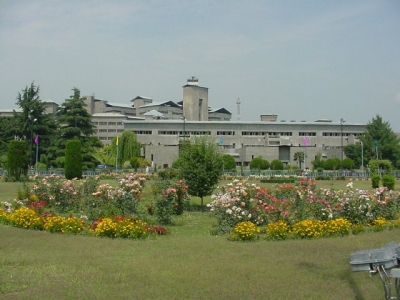Dr. Bashir A Dabla
The existence of an inverse relationship between heavy tourist rush and ecological imbalance has been established universally. Heavy tourism creates conditions for worsening natural environment, pollution of water bodies, soil erosion, deforestation, and loss of flora and fauna. Now, it has been confirmed that high degree of environmental-ecological [EE] deterioration has also led to climatic changes which have led to depletion of underground water-level, scarcity of drinking water, and rising sea level. An uncontrolled, unregulated and mass level tourism have created undesirable EE situation at the global level.
The preceding argument does not stand against the positive benefits of tourism, especially in manifold increase in per capita income, enhancement of development and its infrastructure, and rising standard of life. This has happened in many societies, particularly in the South-East-Asian region.
The above two arguments do not stand for opposite positions with contradictory implication. In fact, there exists a relationship between the two, which leads to a balanced view of tourism and its impact.
All above propositions apply, partly or wholly, to tourism in Kashmir. On the one hand, tourism has benefited all sections and all sectors of society in previous decades. As a result, a significant level of development has been achieved, its infrastructure, and increase in per capita income attained. These aspects reflect in certain degree of prosperity in Kashmir.
On the other hand, tourism has also contributed to the following implications:
– Reduction in the size of glaciers
– Pollution of water bodies
– Large-scale deforestation
– Loss of flora and fauna
– Ecological imbalance
– Urban disturbances and complexities
There are several glaring examples of these implication in tourist places like Gulmarg, Pahalgam, Sonamarg and other old and new tourist destinations.
There is a need to take serious measures to control and regulate tourism in order to stop its negative implications on EE of Kashmir. In the words of J&K Chief Minister “the flagging necessity of long term strategy for preservation of natural resources” directs to “greening of tourism to avoid jeopardizing the crucial eco- balance”.
The question is how to start in a scientific, systematic and organised way. In the words of CM “we should be driven and guided by greater ideal of transferring the earth and its resources to our future generation in a manner where lifestyle and use of resources will complement the cycle of nature.” In practice, it refers to the adoption of the concept and ideal of ‘ecological tourism’ (which focuses on saving the natural EE in its original form), ‘quality tourism’ (which emphasizes on maintaining the natural standard of EE and points toward quality than quantity of tourism) and ‘green tourism’ (which stresses on maintaining green originality of EE) and so on. In the words of CM, “this necessitates the promotion of responsible tourism in the state with two important objectives of preserving the environment to sustain tourism and to ensure benefits to locals by way of economic activities and employment.”
The role of government is crucial in terms of policy formulation and corresponding programs for development of tourism. This must reflect necessarily in implementation. At the same time, the important role of civil society and NGOs in order to make official policy and programme a success story. It follows that serious and planned efforts will help in (i) promoting tourism as an instrument for contributing to development and prosperity and (ii) preserving EE balance, originality and stability.















